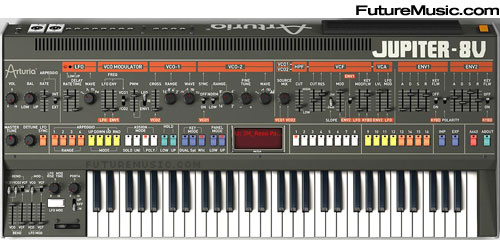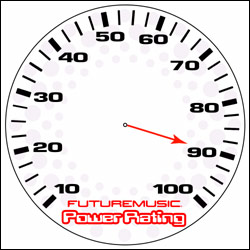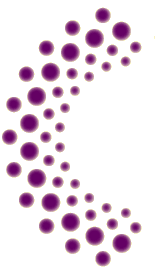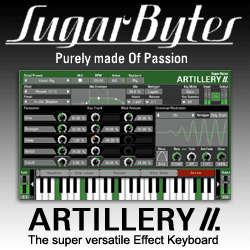|

|
|
|
August 29, 2007
../ TestDrive: Arturia Jupiter-8V
Arturia Demonstrates Why Roland Handed Over The Keys
So before further ado, let's address the elephant in the room. The Arturia JP-8V
does an excellent emulation of the famed Roland Jupiter 8, albeit a hyper-present and ultra-clean version. However, if that's all you care about,
you're missing a big part of what makes the JP-8V a killer soft synth.


Arturia's photorealistic interface is lovely to behold
Arturia obviously did their homework. The JP-8V really does sound like Roland's
16 oscillator analog flagship — a voice that defined the early '80s Pop music sound. The Beast, as it was known in some circles,
featured eight "whopping" notes of polyphony, oscillator sync, polyphonic portamento, cross-modulation, a rocking arpeggiator and tasty resonant
filters. Using Arturia's next generation TAE sound engine, the JP-8V is a great showcase of their new engineering muscle.


As with every other product in their line, Arturia does a stellar job of visually
recreating the Jup's interface right down to the rainbow buttons on top of the keys. All the front panel knobs, buttons and sliders are realistically
recreated, but they seemed to have run out of gas when it came to the visual design of the hidden panel, which displays the presets browser, the search faculty,
and the modulation action.
Arturia recreated the sound layering of the original with each Preset broken down into
an Upper and Lower tone, which can then be played in three different ways Whole: only the Upper tone plays, Split: the Upper and Lower tones are split
between two keyboard halves, and Dual: the Upper and Lower are played together. Most users will opt for Dual and Whole, with performance-oriented keyboardists
exploring the Split mode on occasion.


The JP-8V's preset browser is simple and effective, but could use some additional thought
The German (think Ableton and Native Instruments) inspired browser is useful and permits
sound surfing filtered by type and descriptive characteristics: Factory or User Created, Type (Guitar, Pad, Organ, EFX), Mode (Dual, Split, Whole), and
Project,. Thus, if you want a heavy Jungle bass, you would choose "Type: Bass" from the first filter, and then "Characteristics: Aggressive" from the
second filter. The JP-8V will then return a qualified results set. No more wading through dozens of patches!


The JP-8V's signal chain gives you inspiring options for routing
Now Arturia could have just presented the above to the masses and called it a day for
version 1.0, but they decided to throw on some after market accessories that really kick the JP-8V into high gear. First, on the list of mods was to
tweak out the 8V's signal chain. The original Jupiter 8's sound was thick, weighty and powerful, but it often needed a few choice effects to turn it
into something truly special. Arturia was hip to this and has supplied a Chorus/Flanger, Parametric EQ, Phaser, Distortion and a Ring Modulator to the
JP-8V's arsenal. However, the kicker is that you can place any of these effects in the actual signal chain and not just on the outputs. For example,
you can drop crunchy Distortion after the VCO, but before the Filter section, then add a Flanger effect after the Filters, but before the VCA. The
creative possibilities are endless and it allows the Jupiter sound to explore uncharted territories.


The JP-8V's sequencer/step-modulator expands the sonic character of any patch
Second, Arturia has incorporated a 32 step sequencer into the JP-8V, accessed in the
Modulations arena. Think of it more as a step modulator than a sequencer — it can create some provocative and intricate tweaks to a patch by regulating
up to three outputs that can be assigned to VCO pitch, VCO pulse width, HPF cutoff, VCF cutoff, VCF Resonance, or VCA. A knob adjusts the "intensity" for
each output, and there's a Q button, which designates the modulations as semitones instead of just steps. You can sync the whole shebang to your Digital
Audio Workstation's master clock, or adjust the rate manually — up to 240 BPM. Experimental electronic musicians, or live performers into the "Bloops
'n' Bleeps" scene will definitely get a rise out of this feature.


Galaxy lets three LFO's loose in a Jupiter Modulation Cage Match
Last, is the Galaxy mode, which can be described as a modulations matrix "mosh pit." Again
located under the Modulations tab, Galaxy allows two different LFOs to duke it out in a ring whose axis is controlled by yet another LFO. Shapes include your
basic square, sine, sawtooth, or triangle, but we would have loved to see Arturia include some wild cards including a supersaw. All flavors can be synced to
master tempo.
Now the fun begins. The sum of all three LFOs is displayed as a unified pong-like animation
on the X/Y grid. You can then assign up to three different destinations for both the X and Y coordinates, just like the sequencer, to make patches evolve,
infuse a sense of urgency, or create progressive motion. This is another outstanding feature that allows the classic Jupiter 8 sound to time travel 30 years
into the future.
One drawback to the JP-8V is that can be a bit of a CPU hog on older computers, especially on
the PC platform. Another bummer is that Arturia still utilizes a Syncrosoft USB key protection scheme. Finally, some users who often remember a patches location
visually may miss the standard file-tree patch browsing arrangement.
All in all, Arturia's Jupiter-8V is an excellent recreation of the famed Roland '80s synth with
several intelligent sound sculpting accoutrements added for taking the original sound into new wonderful directions.
The Future: An obvious upgrade would be the inclusion of the Jupiter 6's filter's into
the product. The Jup 6's filters had a nasty, ballsy edge that made it very popular with early Techno producers, and would work well with today's dance music
sound. We'd also like to see a little more French attention to the Browser, Galaxy and Sequencer interfaces. We like the simplicity of the GUI, but it needs
some sex. In addition, a few provocative additions to the Galaxy's waveforms would spice things up nicely.
>>> Back to Digihear?

Advertise on FutureMusic.com! | Privacy Policy |
Employment Opportunities | Contact Us
Copyright © 2007 Futuremusic® All Rights Reserved.

|

|
|







Could this be Arturia's best analog emulation to date? A stellar virtual recreation of Roland's classic analog beast, the Jupiter 8, with plenty of additional
modulation goodies thrown in for big, sonic fun!








News Archives

Digihear? Stories: August 2007
Digihear? Stories: July 2007
Digihear? Stories: June 2007
Digihear? Stories: May 2007
Digihear? Stories: April 2007
Digihear? Stories: March 2007
Digihear? Stories: February 2007
Digihear? Stories: January 2007
Digihear? Stories: December 2006
Digihear? Stories: November 2006
Digihear? Stories: October 2006
Digihear? Stories: September 2006




|
|

















